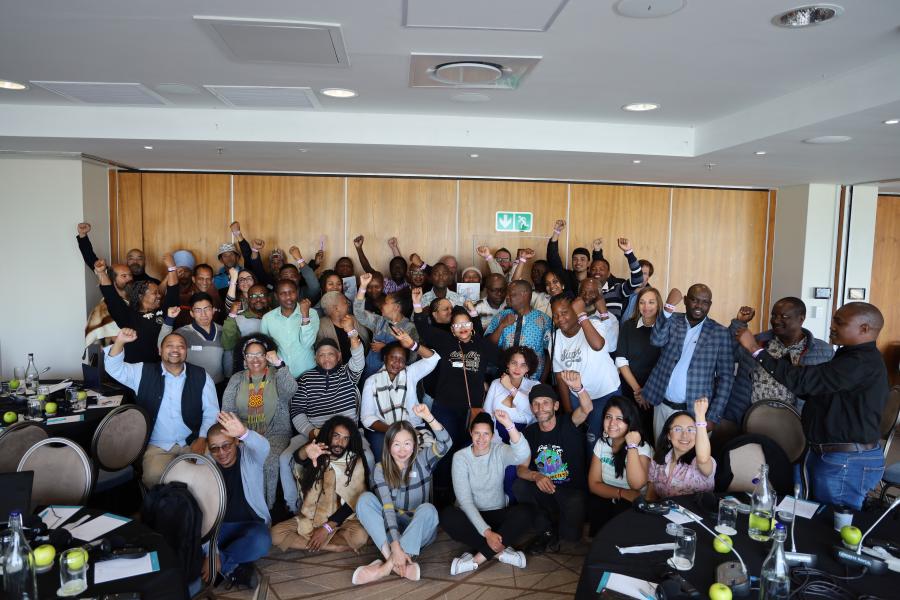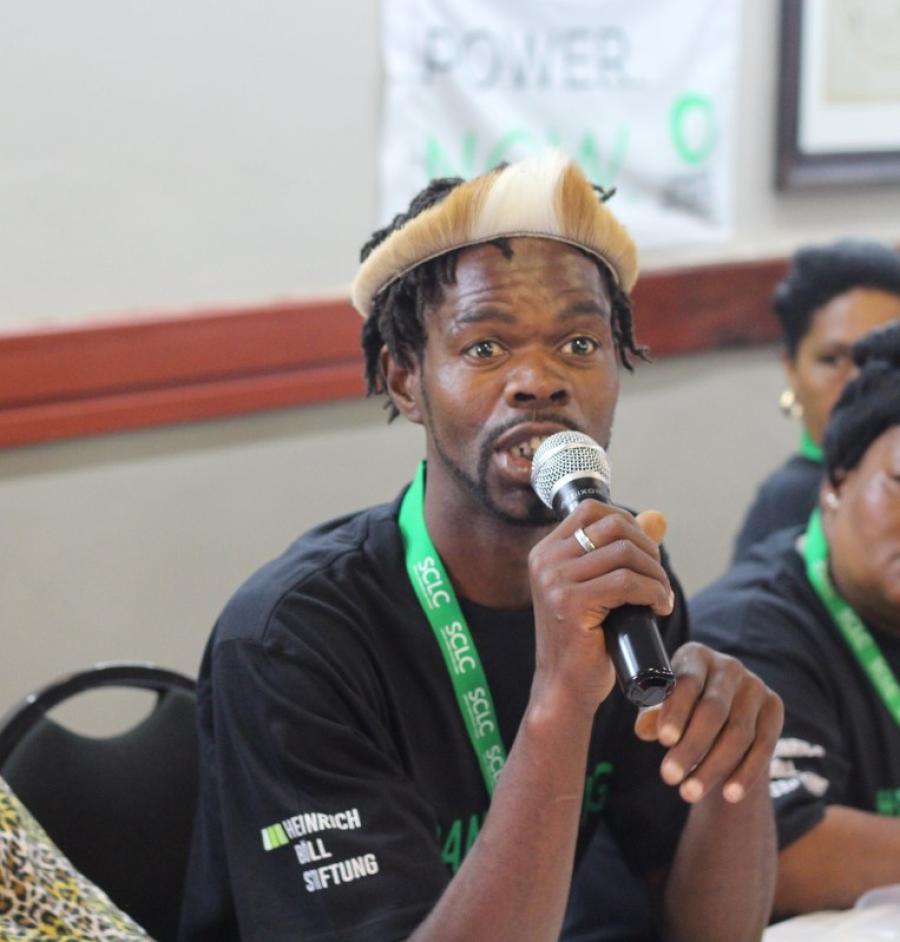A May 21, 1992, article in Johannesburg's The Star, "Zambezi Water Could Do the Trick," speculates that South Africa's industrial heartland will run out of water at some point in the next 12 to 30 years. Noting that much of South Africa is poorly endowed with water, the article reassures readers that "trapping into the virgin waters of the Zambezi River...could do the trick." Indeed, a May 14 editorial in the same paper goes so far so to state, "But there is new water: the Zambezi has enough for all of southern Africa's future needs."
Readers would be well advised to ask two questions. Does South Africa have a serious water problem? And does the Zamezi present a viable long-term solution to that problem? The answer to the first question is an unqualified yes: the water problem is characteristic of southern Africa as a whole. AS I shall explain, the answer to the second question is no. Furthermore, plans for providing water to southern Africa's urban-industrial and mining complexes frequently have been, and will continue to be, implemented at the expense of the area's indigenous people.
IS THE WATER THERE?
Rainfall from the Inter Tropical Convergence Zone, which moves south of the equator, provides most of southern Africa's water. The main drainage system for all this water is the Zambezi River, and Botswana, Namibia, South Africa, Zambia, and Zimbabwe all look to the Zambezi as their ultimate water source.
The Zambezi is one of the great rivers of the world. Rising from sources in Angola and Zambia, it flows over 2,000 miles through eight countries before entering the Indian Ocean.
Since the 1981-82 seasons, however, the Zambezi's flows have significantly fallen, suggesting return to its low-flow pattern prior to the 1946-47 season. A March 1992 memo to the electricity subcommittee of the South African Development Community (SADC) on behalf of Zambia and Zimbabwe's joint Zambezi river Authority notes hat inflow into the Kariba reservoirs in the Middle Zambezi Valley over the past 10 years has averaged only 52 percent of that during the preceding 20 years, and that 1981-84 was the direst three-year period on record. 1990-93 may be even drier if this year's inflows continue the trend to the past two years.
Contrary to the statement in the Star, the Zambezi's waters are hardly virgin." No international agreement covers the use of Zambezi waters. AS a result, Namibia, Zambia, and Zimbabwe are utilizing water on a unilateral basis. Zimbabwe has been pumping water from the Batoka Gorge on the Zambezi to its coal-fired Hwage power plant since the mid-1980s. Namibia is conducting feasibility studies for irrigating sugar cane, which demands a great deal of water, in the east Caprivi, while Zambia's Nkambala Sugar Estates utilize nearly 200 million cubic meters per year from a Zambezi tributary. Within the Kariba reservoir basin, a multinational agribusiness in Zambia is pumping water to irrigate several thousand acres of cotton and wheat. Below the Kariba Dam, a second Zambian agribusiness is expanding another major irrigation project that uses Zambezi flows, and small-scale dams along the Middle Zambezi Valley escarpment in Zambia are reducing runoff to the river.
Indeed, if the Zambezi's low-flow trend continues, it won't be able to supply the countries through which it runs, let alone South Africa. Should global warming occur (current estimates predict that temperatures in southern Africa could rise up to 5 degrees centigrade during the next 50 years will further reduce flows.
WATER SCARCITY
The 1991-92 drought in southern Africa was the worst on record in the region, devastating food production and leading to substantial food imports. At first, rains over much of the area were good and land preparation and sowing proceed, but in January 1992 the rains failed and maize crop - the grain staple of the region - withered and died. In Namibia, 80 percent of he crop was lost; in Zambia, nearly two-thirds.
By mid- 1992, Africa Report was referring to the droughts as "a natural disaster of Biblical proportions." Maize needs were estimated at 11 million tons, 4.5 million of which were required by South Africa and one million by Zambia. (Because it extended over several years, the 1984-87 drought was also devastating within the region, for example, killing 25 percent of Botswana's cattle between 1982 and 1988.)
While such droughts intensify the water problem, population increase and industrialization place increasing demands on water resources regardless of rainfall. In South Africa, the Vaal River supply area (which includes Johannesburg, Pretoria, and the country's maize belt) produces more than half of South Africa's gross domestic products. According to the 1988 Report of the Committee on Water Demand in the Vaal River Supply Area Forecast to the Year 2025, "Further major importations will be needed" beyond the inter-basin transfer schemes currently at work.
One such important will come from the multi-billion dollar Lesotho Highlands Water Project (LHWP), currently under construction. This is the largest water project yet to be undertaken in southern Africa. The Star reports that the initial estimates of some $2 billion of the project now exceed $5 billion. Should all phases be completed - cost of overruns might stall the project - LHWP will deliver about half of Lesotho's water supply of South Africa. According to existing forecasts, however, South Africa will need even more water between the years 2004 and 2020.
Elsewhere in southern Africa, water shortages are also intensifying. The Botswana government has periodically had a curtail new connections to applicants in the regional headquarters of Maun, at the lower and end of Okavango Delta, and restrict supplies to existing users. The water situation in Bulawayo, Zimbabwe's second-largest city, has reached the crisis point.
Increasingly, governments and planners are looking to the Zambezi to solve the region's water problems. For example, studies are under way to import water from the Zambezi via two routes: the lower reaches of Botswana's Okavango River system and a 700-mile canal or pipeline running through eastern Botswana. Either would supply up to 760 million cubic meters per year to Botswana while supplying at least twice that amount to South Africa.
Within Botswana, the government's 1991 National Water Master Plan concluded that the country would need more water from the Limpopop River, the Zambezi,and other northern border sources beyond the 2020-25 period. Wrote the plan's authors. "Botswana must maintain its interest in water rights on the Zambezi for its long-term supply security." (Meanwhile, in 1992 the Zimbabwe government endorsed a pipeline project out of the Zambezi that would deliver 60 to 95 million cubic meters per year to Bulawayo and environs.
IMPACTS ON INDIGENOUS PEOPLES
These kinds of river-basin development projects tend to be in relatively isolated areas inhabited by rural people with low incomes. Historically, the Kariba Dam, which was built in the Middle Zambezi Valley in the late 1950s, has had the worst impact on local people. Upon completion, Kariba created what was then the world's largest artificial reservoir, with a storage capacity four times that of the reservoir behind the Hoover Dam on the Colorado River. Fifty-five thousand African villagers, whose ancestors pioneered the cultivation of the Zambezi's fertile alluvial soils hundreds of years ago, were forced to leave their homes. Today, most are still "development refugees." Many live in less-productive, problem-prone areas, some of which have been so seriously degraded within the last generation that they resemble lands on the edge of the Sahara Desert.
Kariba was built to provide hydroelectricity to the urban-industrial and mining sectors of what was then the Central African Federation. While the Lesotho Highlands Water Project will provide electricity for Lesotho, its major purpose is to major South African urban centers. Undoubtedly, millions will benefit from the project, but it remains to be seen if the low-income mountain people whose arable lands and grazing will be flooded will be among the beneficiaries.
While the intention of Kariba and the Lesotho Highlands Water Project was to benefit the urban and mining sectors, Botswana's Southern Okavango Integrated Water Development Project (SOIWDP) was supposed to benefit rural residents through increased food production, creation of employment opportunities, improved utilization of land and water resources, and higher living standards. Planned over a five-year period, SOIWDP was approved by Parliament in 1989.
People in the project area, however, were skeptical that the project would actually be for their benefit as opposed to that of the regional town of Maun and the diamond mines at Orapa and Letlhakane that are a major sources of the government's foreign exchange. When a contractor began to mobilize equipment late in 1990 to construct the project (the first phase of which involved constructing a dam and dredging an Okavango channel to direct water into the future reservoir), the local people objected strongly. In response, the government of Botswana suspended the project and asked the World Conservation Union (IUCN) to review it.
Initially several members of the 13-person IUCN team were favorably disposed toward SOIWDP. As time went on however, more and more deficiencies were discovered, to the extent that in May 1992, the review team unanimously recommended that the project be canceled in favor of a lower coast but broad-based developed strategy that, on the one hand, would raise living standards in a fashion that would be enviornmentally, economically, and institutionally sustainable, and, on the other hand, would not require major engineering works.
While the government of Botswana's response was to cancel SOIWDP, the response that it gave was local opposition to the project rather than the serious hydrological, environmental, and socioeconomic deficiencies that the IUCN team identified. A year later, none of these deficiencies have been accepted. In the meantime, a serious water shortage continues in the project area, so that the risk continues of SOIWDP's being implemented at some future date.
A DELICATE BALANCE
As water shortages become more apparent in southern Africa, government officials and planners are increasingly looking toward the Zambezi for a solution. Should the Zambezi's current low flow regime continue, however, even the Zambezi's waters will be insufficient to meet the demands of the riparian states, let alone South Africa.
If equitable distribution of existing water resources is to occur, and international treaty on the waters of the Zambezi River is required. Also needed is an approach to project planning that attempts to balance the requirements of balance the requirements of rural and urban users. Otherwise, low-income rural people will continue to be disadvantaged as a results of the implementation of these efforts.
Article copyright Cultural Survival, Inc.



